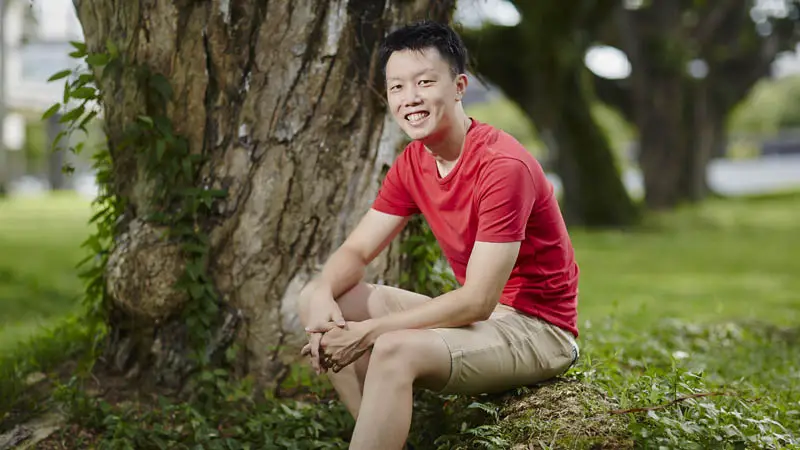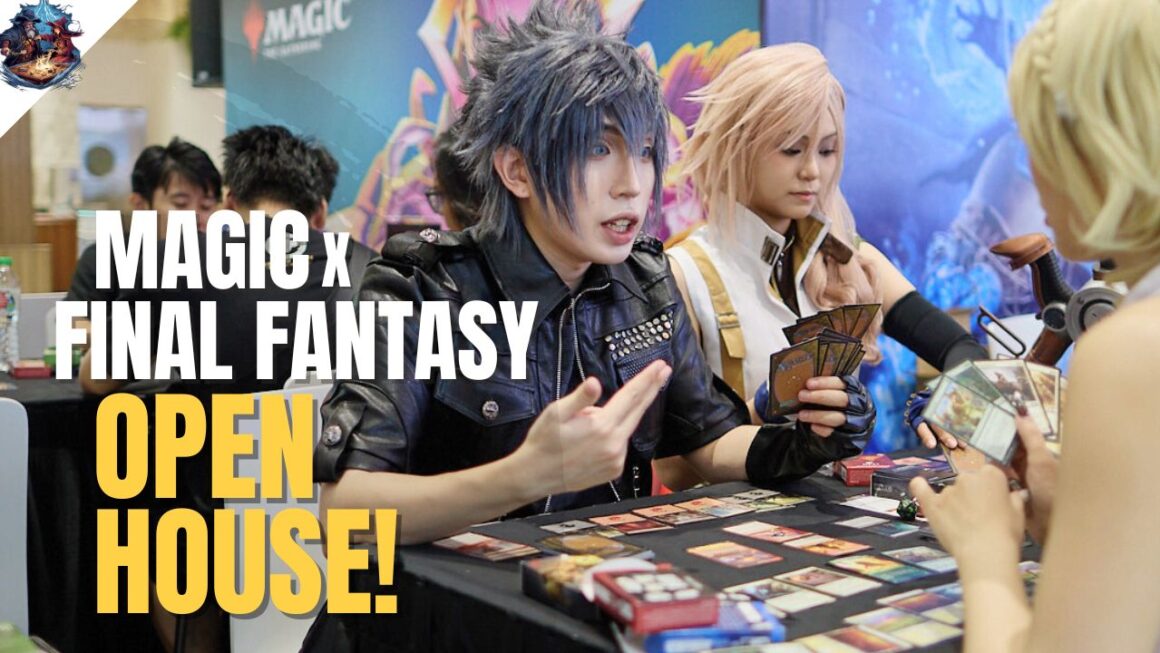Not every Magic player gets to fulfil their fanboy dream and play a major role in the favourite game’s volution. For Julian Kok, it took almost 15 years of honing his craft before he had his own art printed on a Magic card, collected by millions of people around the world. it’s been a dizzying journey of pride and quiet contentment, and when we met in a quiet cafe corner on a slow Monday afternoon, you had a sense he was still unaccustomed to being recognised.
After fumbling our fist-bump into a half-assed handshake, I got to dig deeper into his amazing, almost magical, journey from a small Malaysia town, to the football-mad England for work, and now in sunny Singapore carving a career as an Art Director at Ubisoft.
The 37-year-old Singapore Permanent Resident made his major breakthrough in latest Kamigawa: Neon Dynasty expansion, with the highly effective Eiganjo, Seat of the Empire Channel Land as the most prominent, alongside many other cards (no less impressive) – Containment Construct, High-Speed Hoverbike, Bloodfell Caves, and Scoured Barrens.



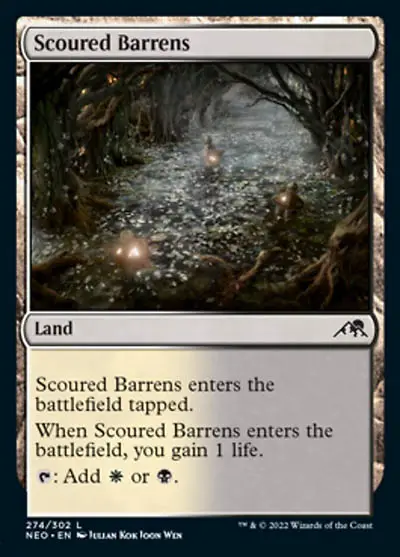
None of those were actually his first piece of work for Magic (we’ll get into that later). Although he’s been drawing plenty of dragons over the years, it was a very particular green dragon that solidified his desire to become an illustrator.
Hamehameha
Growing up, and like with many other kids, Dragonball and Slam Dunk were his books of choice rather than the school’s reading list. We reminisced about the perfection of Dragonball Z under a singular creative vision (Akira Toriyama), and the many disappointments of unnecessary sequels in Dragonball GT and Super, how the latter was “not executed well, style and animation-wise.” Nevertheless it was these stories and their legacy that captivated Julian and got him hooked and committed to a career in illustration.
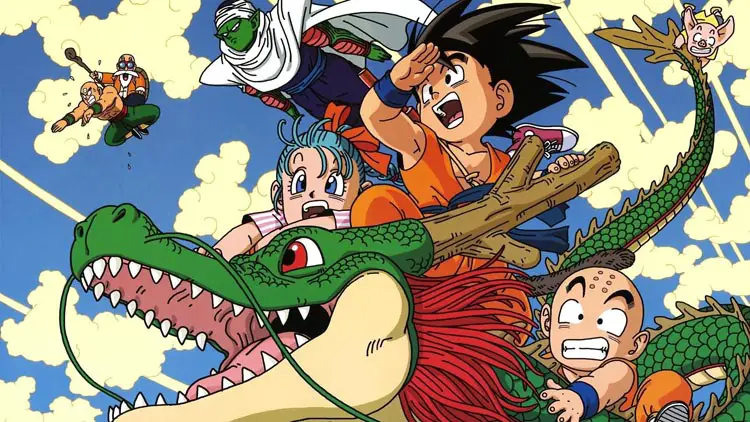
Japanese manga is often in black and white, and easier to mimic, so Julian dived into drawing that art style in his formative years. Magic also played a role in the push toward a career in illustration. His fondly remembers picking up his first cards in Mirage (1996), and despite some breaks along the way, still plays Commander and Modern formats. “Magic is the pioneer of trading card games, and with many card games or games going digital nowadays, nothing beats social interaction where paper Magic players come together.”
Eventually Julian went on to study animation at The One Academy in Selangor, Malaysia. When that was over, he worked 6 months at a small animation studio, but soon set his sights on greater things.
Living in a Fantasy Land
In 2005, Julian sought what Goku had done in Dragonball, to see the world and become a better fighter (well, illustrator in this case). He settled halfway around the world in Northampton, getting his Bachelor’s degree for animation at the University of Wolverhampton.
“We’re sitting here right now, and over there is the Wolves’ stadium,” Julian pointed to a tree just 20m away, referring how close he lived to the Molineux, home of the Wolverhampton Wanderers football club. Back then they were relative unknowns, and tickets were easy to get. Well today they are sitting pretty high up in the Premier League table.
It was in England where he found a new perspective in art. A friend had given him a copy of Alan Moore’s Watchmen. All these years Julian had been unimpressed with western comics and their incoherent plots, and the continuously changing art styles within the same series. “Watchman was the thing that changed my perception on western comics. This was a really good a one shot story – well executed, well drawn.”

Of course, the uncanny coincidence was that Alan Moore lived right in the same town, and although they never met, Julian went on to take in all of his other works from Swamp Thing to V for Vendetta.
After completing his 1 year degree, Julian stayed on for another 2 and a half years, learning the ropes at a small digital media agency, doing all things from storyboarding and illustrations, to motion graphics for clients. He would have stayed on longer, if not for visa renewal challenges caused by ever-changing immigrations laws and salary requirements.
He returned to his alma mater, teaching at One Academy for over 2 years, and in 2012 he moved to Singapore for work.
One Step Into a Deep, Dark, Dungeon
To Julian, “working for Magic is an ultimate goal for all illustrators,” and he took careful steps to get to where he needed to be. One turning point was getting to do work for the roleplaying game Dungeons & Dragons, which is owned by Wizards of the Coast, also the makers of Magic.

Over 8 years moving from one game publishing studio to the next, Julian diligently kept up his freelancing work for D&D. At one point he was juggling 3 different roles, as he took on a part-time teaching gig in 2018. But the long hours working past midnight just weren’t sustainable, where he had to travel from his workplace at Somerset to class in Queenstown, then back home in Aljunied. Within 6 months he decided to focus on the work that continually improved his skills.
Those were tough days, as his wife was also expecting their first child. To keep striving at a career in illustration, “self-belief and perseverance are of utmost importance, especially when it comes to honing my own craft, as well as doing a lot of research and learning as much as I can.”
Looking All Around and Beyond
To level up his own game, Julian kept a keen eye on fellow Magic artists, especially on his personal favourite Victor Adame Minguez. Like many peers in the Magic world, Miguez paints away from the screen, and has already done work for over 130 Magic cards.
“His treatment for lighting and volumetric painting looks digital and is very difficult to replicate in traditional work,” Julian says. “His colours are saturated and crisp and very refreshing. I’ve really enjoyed looking at his artwork and have learned many things from him.”

But since life is never fair, Julian’s favourite card to play wasn’t done by Minguez, but by another household name in Magic – Sam Burley. Supreme Verdict can’t be countered, and for a control player like Julian, it is the perfect answer against Creature-heavy decks that pack in a few counter spells.
Playing the game over the years kept the dream alive, that one day his vision would make it onto a Magic card.
Building A Tower Brick by Brick
After spending years establishing a reputation for D&D, in 2019 Julian decided it was time to pitch to Wizards’ Art Directors and step into the ivory tower of Magic. He was even prepared to go back to doing traditional painting just to get into the hot seat, as fans and executives alike both admired the permanent and precise form of painting on paper or canvas.
“Can you revert back to digital?” was the first thing they said, Julian recounted with a laugh. They were looking for consistency of quality in the art, and by changing to an unfamiliar process, the sketches he had sent just did not measure up to his digital portfolio.
His first official work was Command Tower in Commander Collection: Black, featuring brand-new art for the oft-reprinted card. The entire process is fluid, with the artist receiving a general brief of the art Wizards would like to see, sometimes mentioning the card name (if it’s a reprint or a notable character), sometimes not.
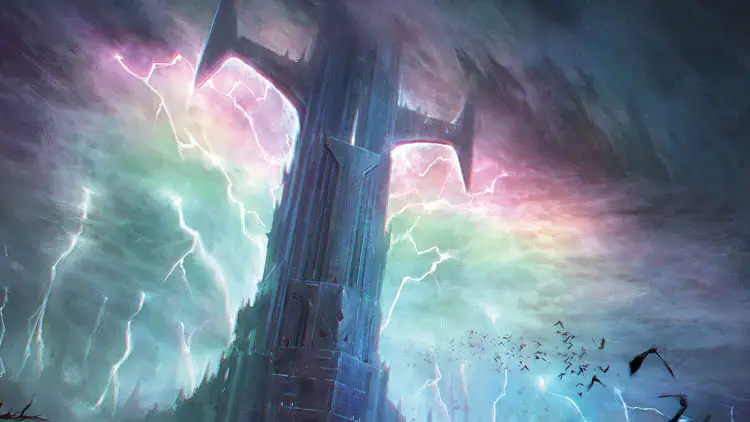
“I sent 3 sketches to Wizards, they gave feedback and picked one to further develop from there.” As a card that has already seen various renditions, the challenge here was to make it his own. “My initial tower was not that colourful, so they asked to make it more vibrant.”
“It felt great!” Julian recounted as his submitted his first ever work for Magic. “And the people at Wizards are a bunch of amazing people that continually pushes me to be a better artist.” Although he couldn’t share exact details, he did admit there’s going to be several more art from him for the upcoming Streets of New Capenna and The Brothers War sets coming out later his year.
“I’m very excited for all of them because it’s going to be awesome!”


